Hana-Maui Resort review: Why Hyatt’s newest Hawaiian hotel is a game-changer
Signing up for credit cards through partner links earns us a commission. Terms apply to the offers listed on this page. Here’s our full advertising policy: How we make money.
Update: One or more card offers in this post are no longer available. Check our Hot Deals for the latest offers.
I’ve once before visited the sleepy town of Hana — an extraordinarily remote farming village on the eastern shore of Maui. To get there, you’ve got to negotiate one of the most dangerous roads on earth: The Road to Hana.
Hyatt recently absorbed Hana’s best property. Formerly Travaasa Hana, it now goes by the name of Hana-Maui Resort. Travaasa Hana was long overdue for a remodel, and that’s exactly what Hyatt plans to do. Within the next few years, this will presumably be a shiny new five-star Alila resort.
We’re all looking forward to that, but I’m telling you now, Hana-Maui Resort is worth visiting today. It’s the single most perfect Hawaiian acquisition Hyatt could have made. I’ll explain — and I’ll show you how to easily save $600+ per night with the best travel credit cards.

Hana-Maui Resort vastly improves miles and points travelers’ Hawaiian experience
I’ve now done the Road to Hana both ways:
- I’ve hurriedly made the single-day round-trip drive, starting early in the morning and making it back to civilization by nightfall
- I’ve driven leisurely into Hana, stayed a couple days, and driven leisurely back
The Hana-Maui Resort is one of the best things to happen to Hawaii award travel in a long, long time. Here are three reasons why.
1. There are no other points hotels nearby
For us free-travel enthusiasts doing the Road to Hana, our only choices have been to pony up hundreds of dollars for an overnight stay in Hana or do a single-day trip. Hyatt solves a huge pain point by scooping up the Hana-Maui Resort. There are literally no other points hotels for hours. The Road to Hana is the most popular thing to do in Maui, after all.
2. It’s a respite in the middle of your Road to Hana excursion
Conquering Hana Highway’s 620 sharp curves are kind of like a rite of passage. It’s a 45-mile trek that takes two hours by car, provided there’s no traffic; but there are so many things to see and do along the way that it could well take nine hours or more round-trip — and that’s if you skip a few of the major attractions along the way. Hitting everything could take 14+ hours, EASY.
If you’re prone to carsickness, four hours of nonstop turning can be tough. This is a two-way road riddled with single-lane bridges and blind hairpin turns. The real danger of the journey exists because the entire drive is so utterly stunning. It’s difficult to keep your eyes on the road — but it’s crucial that you do. Here’s a couple minutes of driving to give you a feel for what the entire route is like. This is what stands between you and the Hana-Maui Resort.
3. You get an authentic Hana experience
I reviewed the Road to Hana a couple years ago, and while it’s largely the same (the amazing crepe stand was M.I.A., presumably because of coronavirus), I’ve changed my tune about the town of Hana being a letdown. Hana is rinky-dink in the most endearing sense of the phrase.
What made me change my mind? Staying overnight.
Authentic Hana only exists in the morning. When you wake up in Hana, you’ve got until at least noon before tourists begin showing up. There isn’t a lot of accommodation in Hana, and the prices you’ll pay for the few available hotels are prohibitive. There are a couple reasonably-priced Airbnbs, but that’s about it.
Do you know what that means?? You’ve got that super famous black sand beach literally all to yourself. You’ve got hours of potent tranquility. The Hawaiian Mayberry is all yours. It’s a spiritual detox you simply will not get when doing a day-trip — in fact, a hectic round-trip drive will have the opposite effect on you, as you look around and wonder why you spent many hellacious hours on the road to reach this anticlimactic farm hamlet.
The location
Once in Hana, you’re in proximity to two of the most amazing beaches on the island.
The first is the aforementioned black sand beach in Wai’anapanapa State Park. It’s about eight minutes north of the resort. This beach is one of the main reasons people drive the Road to Hana. It’s a very beautiful and very unique experience — although 90% of the “sand” is actually a mix of sharp rocks and pebbles.
There are easy and rewarding hikes around this beach, as well. A must-do for day-trippers, and an absolute luxury to be staying nearby.
Note: During our trip, this park required that you purchase admission at least one day before your planned visit. I think it cost ~$30. If you’re only planning a day trip, be sure to buy your tickets beforehand!!
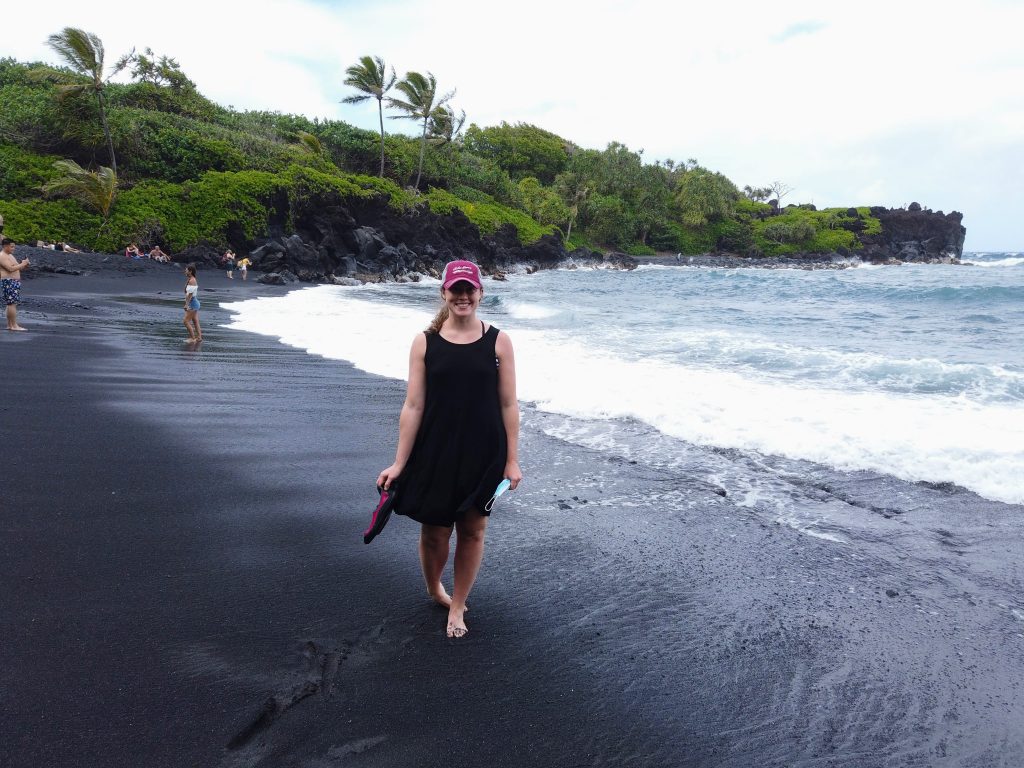
About eight minutes past the resort is our favorite beach on the entire island: Hamoa Beach. The sand is soft, the waves are big, and the area is surrounded by trees that are constantly dropping picturesque white and yellow plumerias all over the ground.
It also feel exclusive for some reason, though plenty of people are always there. Perhaps it’s just neat to look around at one another and know that you all just defeated the Road to Hana. You’ve got an unspoken commonality with everyone there.
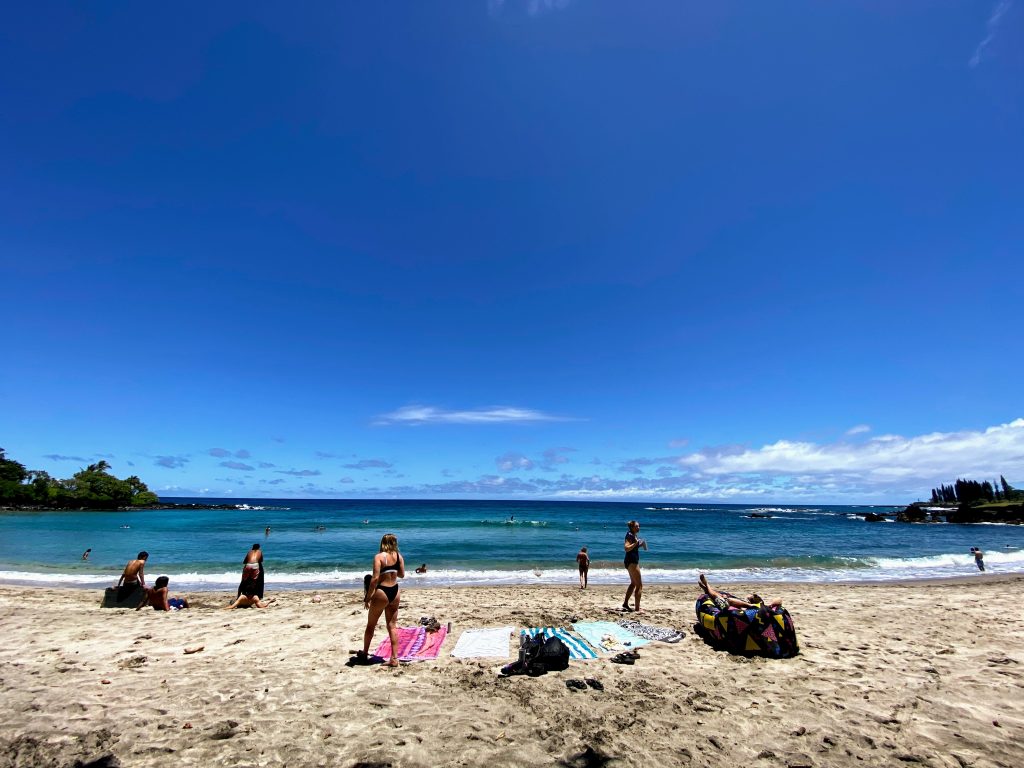
Another small activity that we thought fun was to send postcards/letters from the Hana post office. Unfortunately, the postmark doesn’t stipulate that it was from Hana — it just says Honolulu.
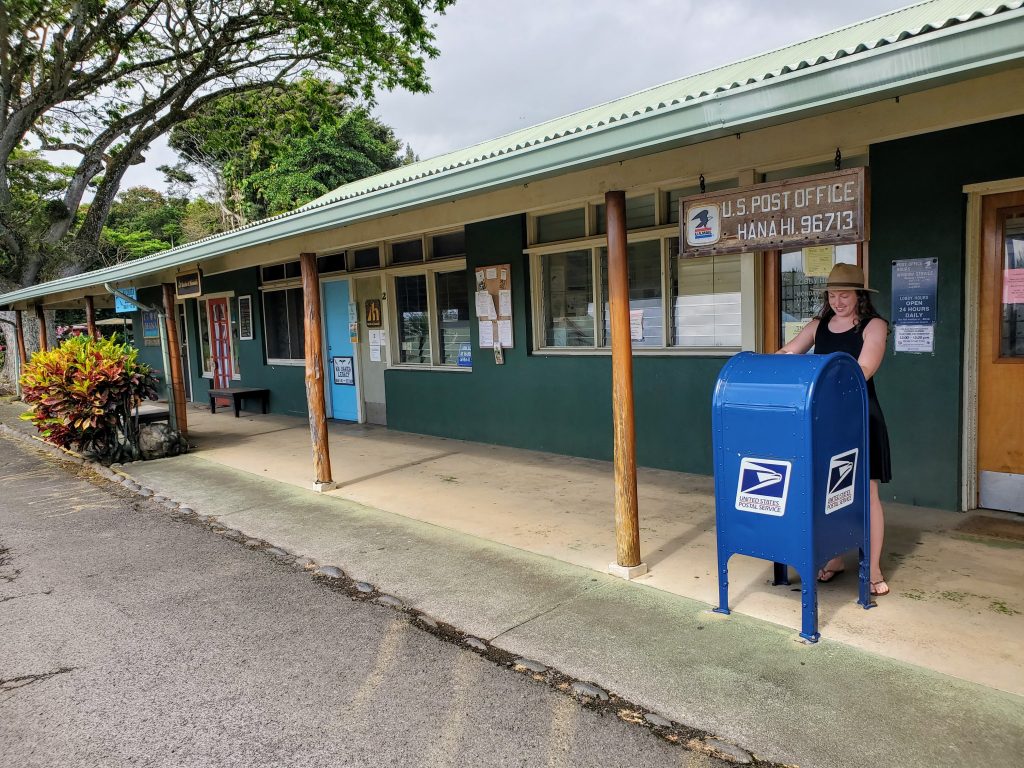
Again, staying in Hana is a must if you want to fully enjoy the surrounding natural wonders. Not far are the Pools of Oheo (swimming holes connected by waterfalls — they’re not always open for swimming but they’re still pretty), and there’s an entrance to Haleakala National Park that leads to a sky-scraping waterfall which is exceptionally photogenic. We didn’t do the waterfall and I’m kicking myself.
The price
Here’s the price for a standard room at the Hana-Maui Resort.

Yowie. For a four-star hotel, that’s a little ridiculous. But now that Hyatt has absorbed the Hana-Maui Resort, you can offset the cost with Hyatt points. This is a Category 7 hotel, which means it costs 30,000 Hyatt points per night on the Hyatt award chart. A good value, considering the hotel regularly costs $600+ per night. We estimate Hyatt points value to be about 1.5 cents on average, so you’re getting a great value at this particular property (2+ cents per point).
My wife and I stayed at this resort for two days. To boot, we were upgraded to a “Waikoloa Residence,” which costs $1,600+ per night. The room tour is just below. Hyatt is fantastic with suite upgrades when you have Globalist elite status (I earned my Globalist status by flying to Mexico for a day).
Pro tip: You can use Hyatt Suite Upgrade Awards at Destination Hotels. My understanding was that you could not do this, but the Hyatt Concierge informed me that this rule applies only to Destination Residences. Destination Hotels participate fully in the World of Hyatt program (including free breakfast). That may be common knowledge, but it was news to me.
The property
Here are a few cool things about the resort:
- They’ll deliver “room service” to anywhere on the resort. If you’re playing tennis, if you’re at the pool, if you’re sitting on a random bench, let them know and you’ll have your food in no time
- Rentals like golf clubs, bicycles, etc. are at the concierge area. It’s only open certain hours, but you could call them at 2 a.m. if you wanted something, and they’ll get it for you
- You can call a golf cart to take you anywhere around the resort — and they’re prompt
- They offer leis and welcome drinks upon arrival — namely, POG juice. That is, passion fruit, orange, and guava. I’m not one to rave about juice, but WOW
Below is a 16-minute walk around the premises to get an idea of the layout. I didn’t duck into the spa or the store in this video– nothing to write your mother about in there. I also couldn’t be bothered to video the on-site art gallery, though I hear it’s nice if you’re into that sort of thing.
The resort is separated into two sections. The first 7.5 minutes of the video is the northern division where you’ll find standard rooms (to my left at the beginning of the video) and Waikoloa Residences. The rest of the video is the southern division where the oceanfront villas are located.
It’s funny, the two areas almost seem like different ecosystems. The north feels like forest, while the south is more tropical.
The entrance is quite unassuming. I wouldn’t have paid it notice if I didn’t know what I was looking for. In fact, I didn’t even know this hotel was here during my previous visit to Hana — again, at the time called Travaasa Hana, not managed by Hyatt.

As Hana is on the east coast, you’ll be enjoying sunrises instead of sunsets.
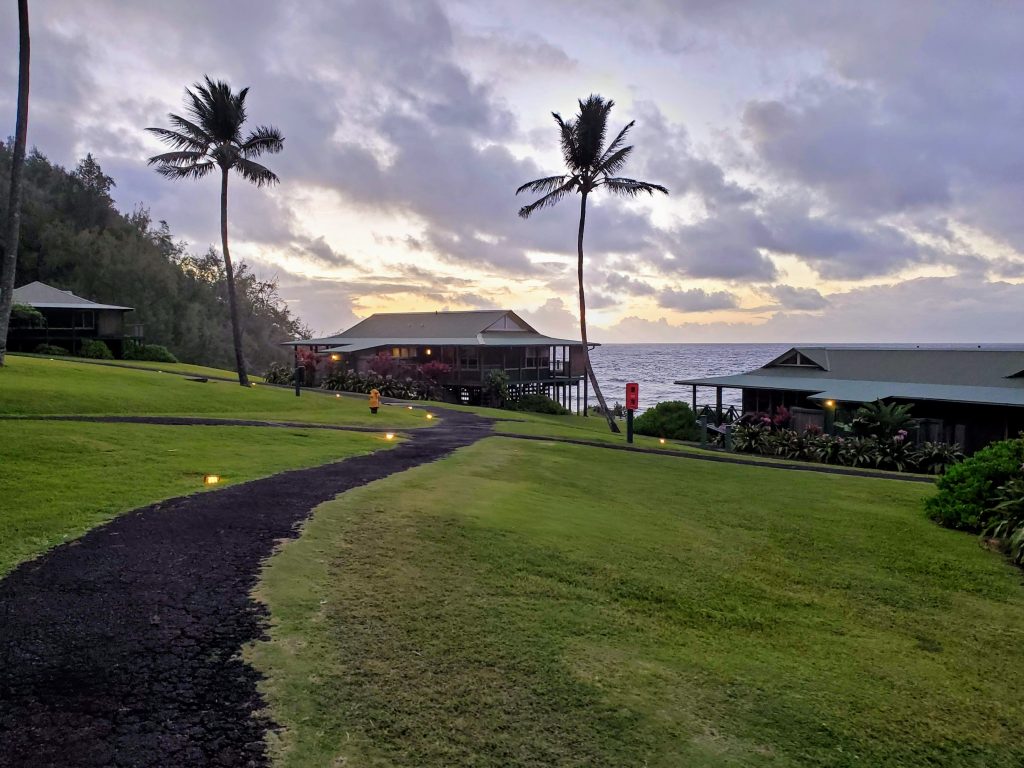
There are an overabundance of small paths coursing through the property, and you’ll find some hammocks hanging between select palm trees around the shared spaces.
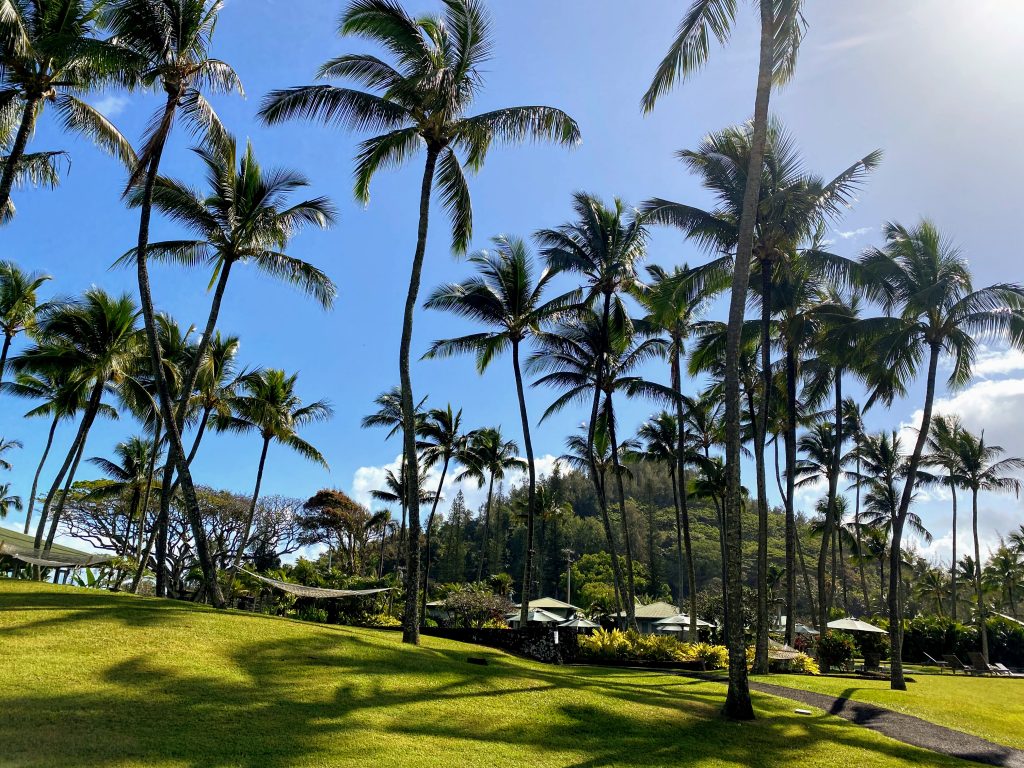
The pool is stunning, and it’s much, much larger than I had anticipated. It gives you a nice view of the ocean, too. The hot tub was closed due to coronavirus restrictions, but it’s located at the far end of the pool, so it’s got an even better view of the water. The concierge says it’s THE best place in the resort to watch the sun rise. The pools are 24 hours, which is a big plus. There’s also a grab-and-go bar/restaurant a few steps to the left.
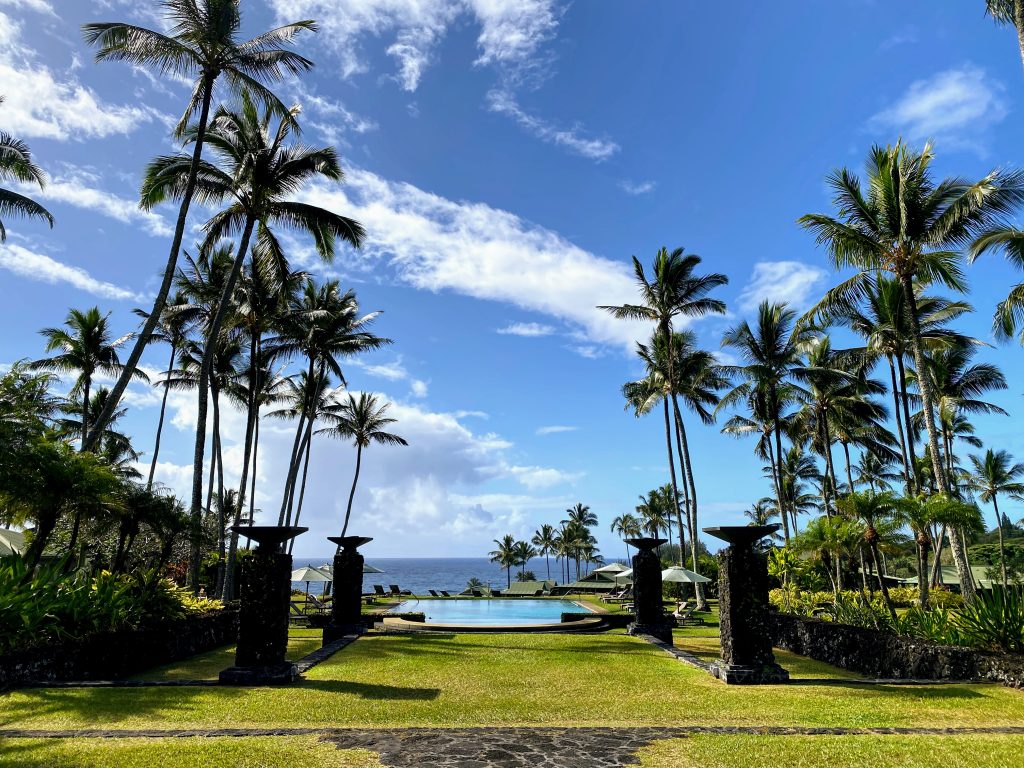
The room
As I say, we were upgraded to a Waikoloa Family Residence, the highest room tier at the property. It was a beautiful room, but the sweet spot is the ocean view bungalow room category — a good $500 cheaper than the room we received. The Waikoloa Residences were just about as far from the ocean as you can get.
Hana-Maui Resort brags about its lack of electronics to help you disconnect entirely. Perhaps this is only the case in lower-category rooms, because we had a television and Wi-Fi.
One big note: There’s no air conditioning. That could be a deal-breaker to a lot of people. There are plenty of ceiling and floor fans in the room, but in the noonday I found myself sweating quite a bit! Nights were always cool and airy.
Here’s a quick room tour.
If you’re not into videos, here’s the view when you walk in the front door. Very pretty but certainly dated. The furniture felt and looked worn.
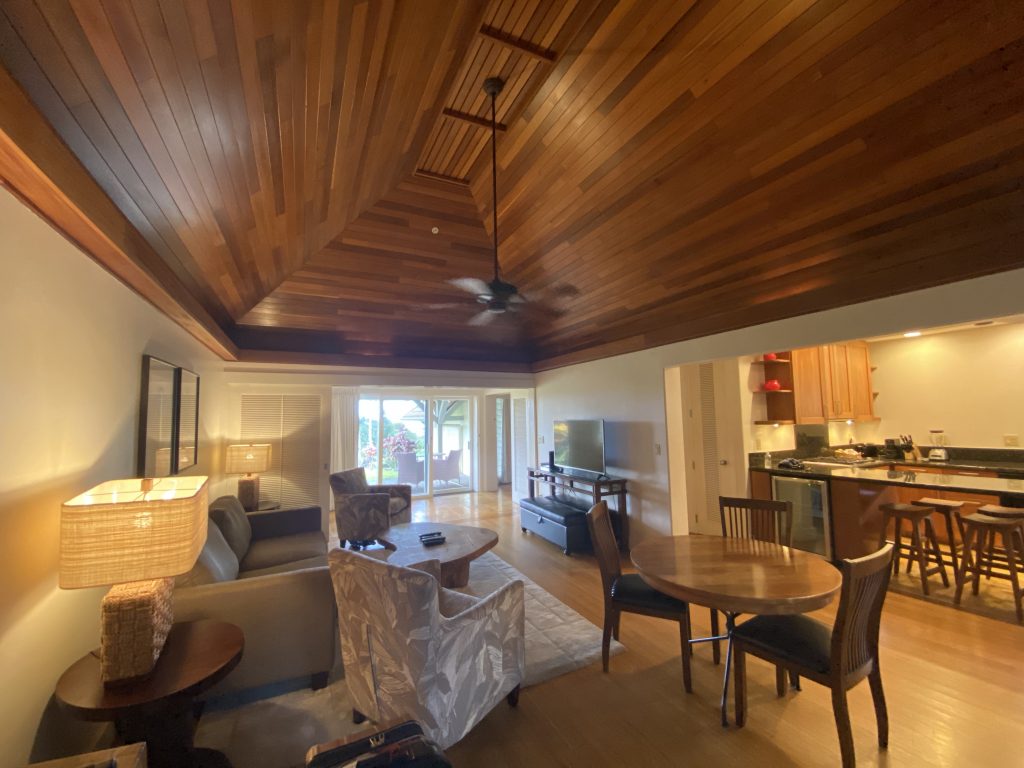
These room categories have massive kitchens with full-size appliances, including a wine refrigerator.
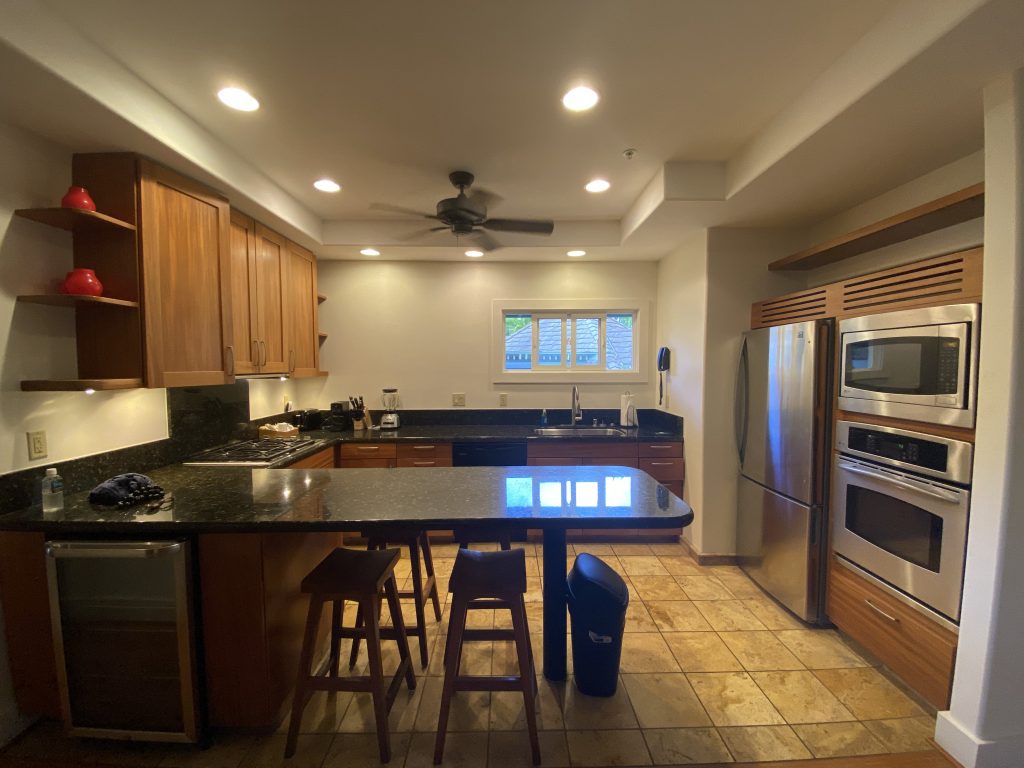
Huge bathroom, as well.
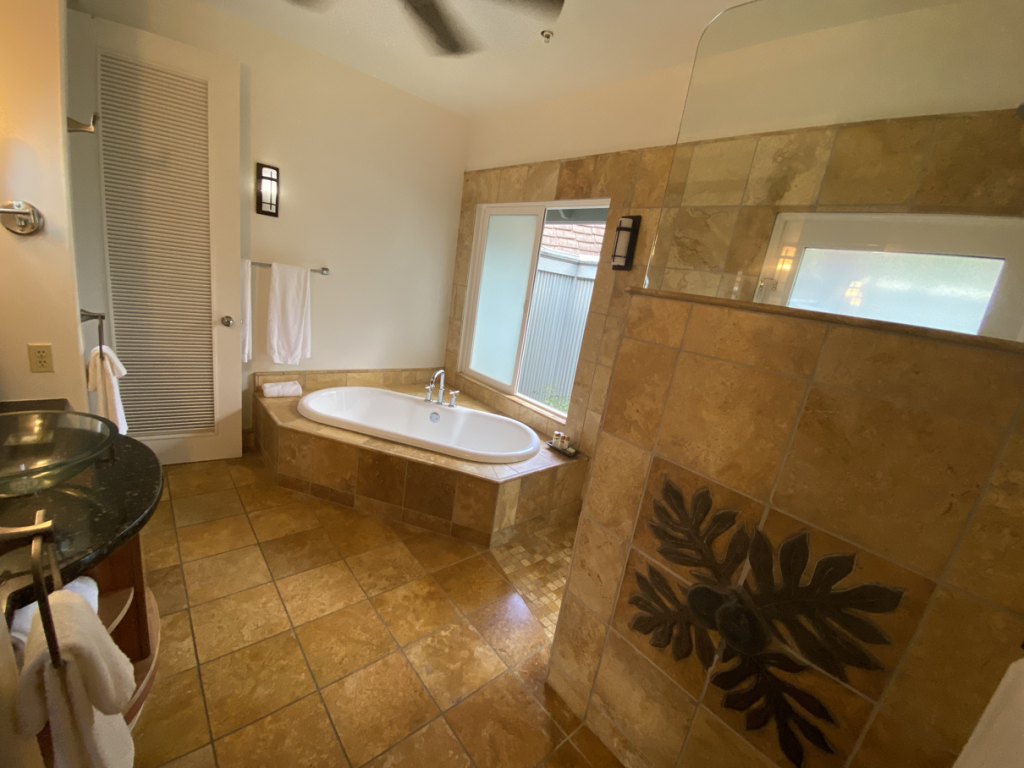
The bedroom has just one small window, which facilitates a cross breeze as long as you keep the bedroom doors open.
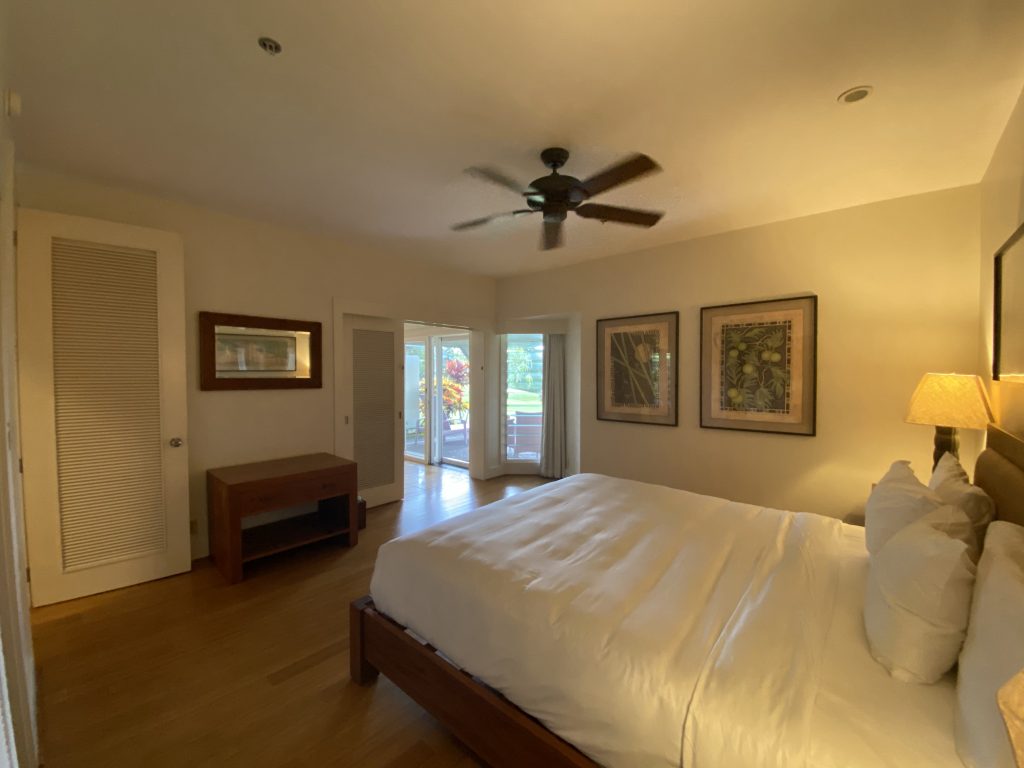
The wear and tear
Now let’s take a look at the “subtle” hints that this resort is a bit tired. Again, Hyatt plans to completely renovate the property within a few years, and there will surely be upgrades in all the right places. But right now, you’ll find rusting metal fixtures, tarnished cabinet handles, chipped kitchen apparatus, etc. that you should never find at a hotel with nightly prices breaching $600 for standard rooms. Perhaps the abrasive ocean air expedites the resort’s corrosion.
Even so, we’d find a lightbulb not working here and there, rickety ceiling fans, and so on.
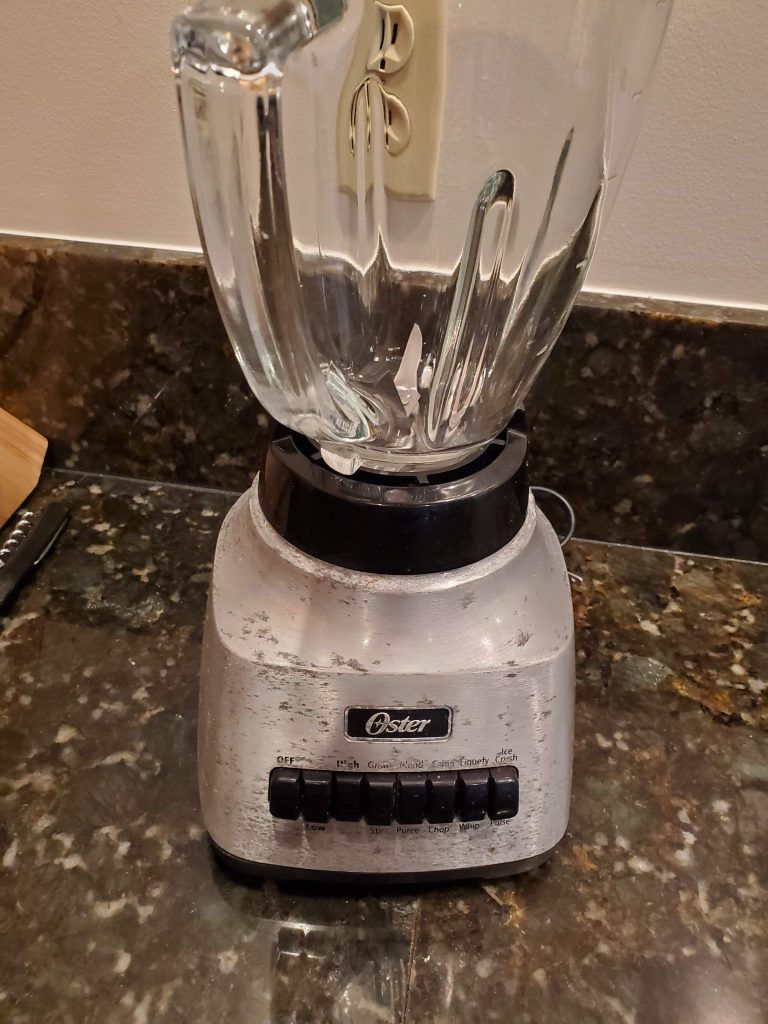
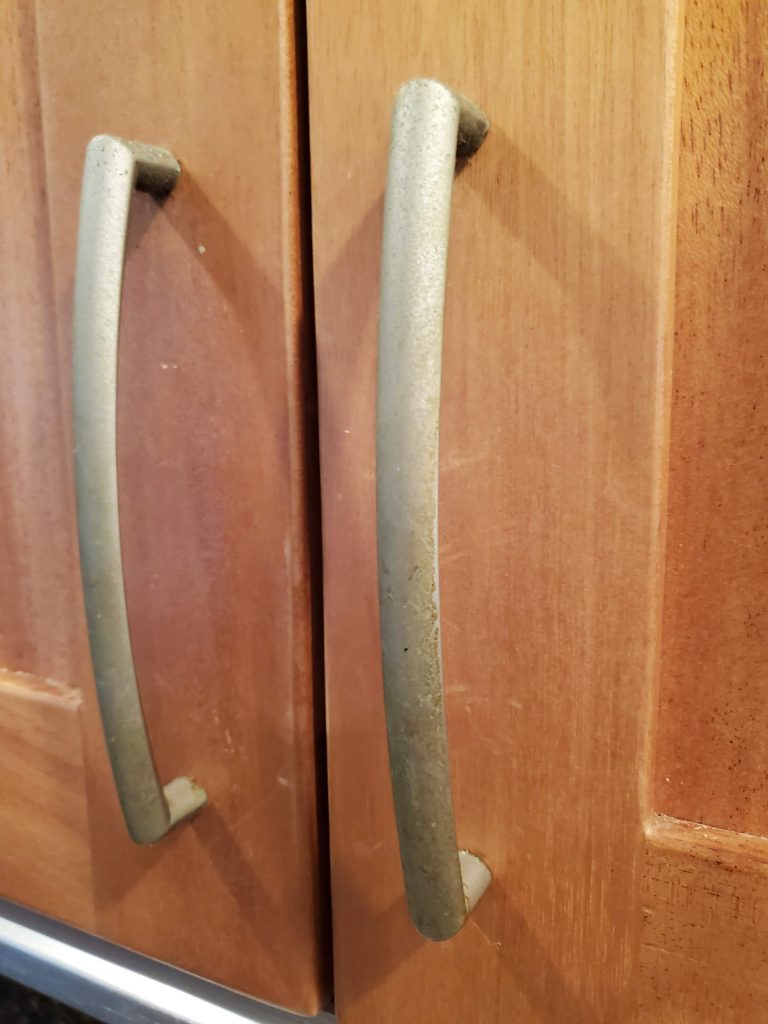
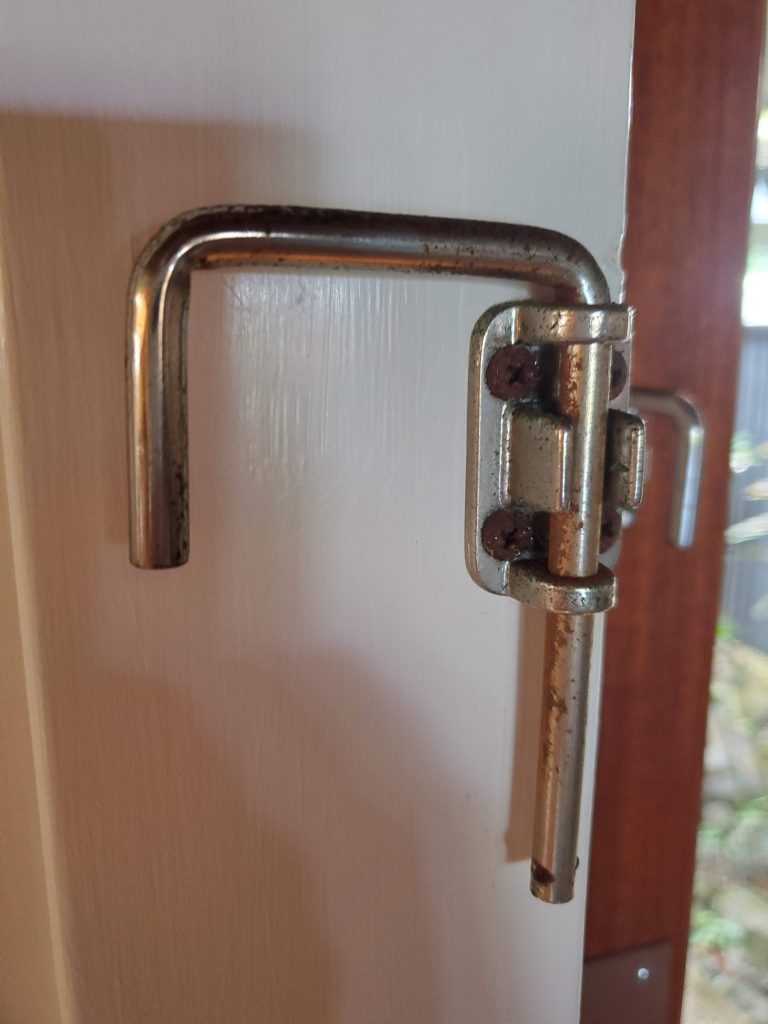
The food
Meals in Hana are pretty easy to do on the cheap.
During our stay, the resort’s main restaurant was closed due to coronavirus restrictions. But there’s a restaurant a lovely short walk across the street called Hana Ranch Restaurant that partners with the resort. You’ll find a nice view of the ocean here, and it’s open and breezy with indoor and outdoor seating. If you’re sitting anywhere on the western perimeter, expect to get wet when it rains.

Here’s a sample check. Hyatt Globalist members get free breakfast, excluding alcohol. You’ll charge the full meal to your room, and Hyatt will automatically remove it from your bill. On this particular day, we saved ~$33 — but we spent $22 on mimosas. You know what they say, you only YOLO once.
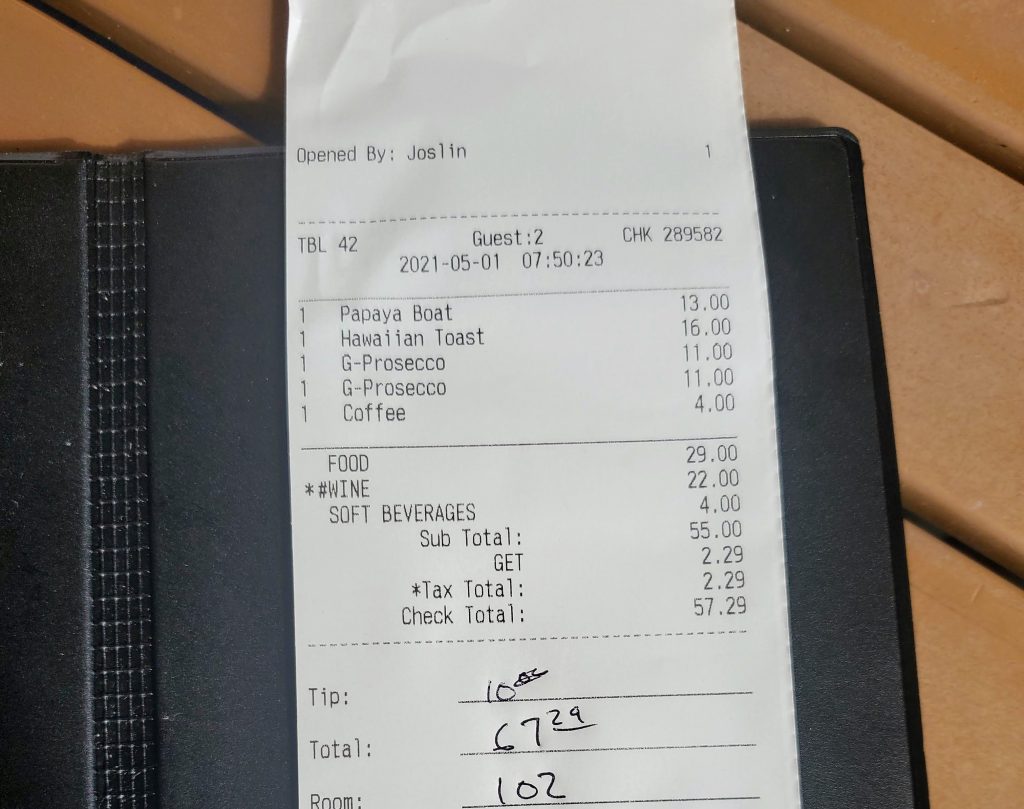
And here’s a picture of everything on the above receipt. The coconut syrup on the side of the Hawaiian Toast was extremely potent. We started pouring it in black coffee by the end of the trip.

Here are some other breakfasts.
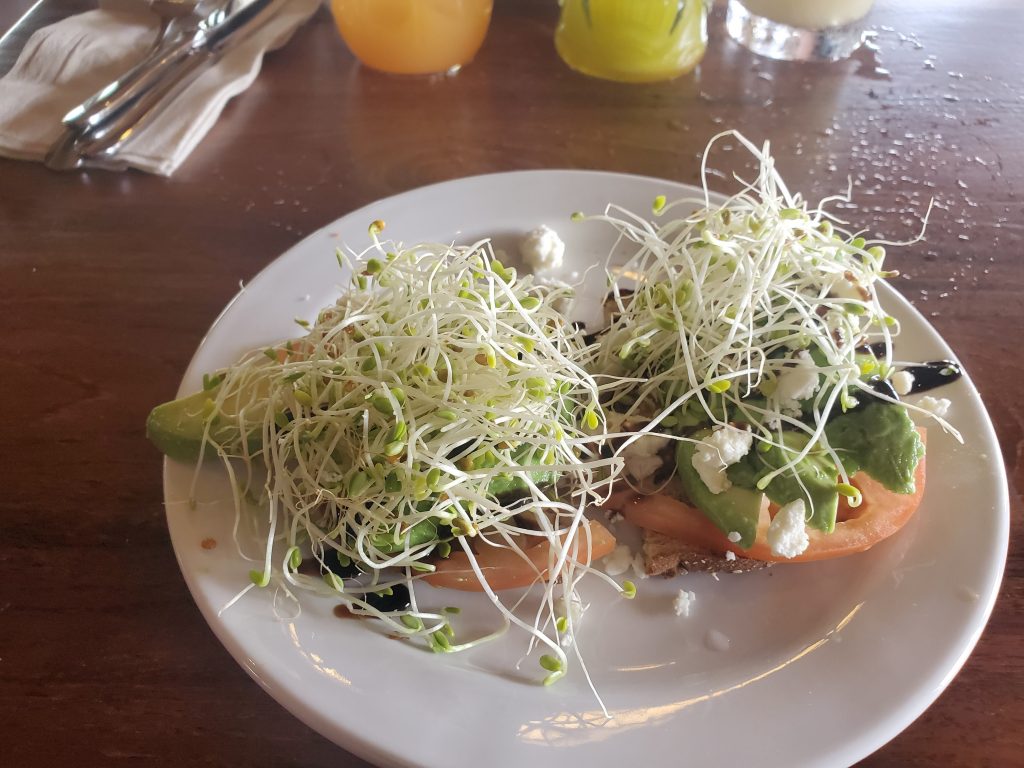
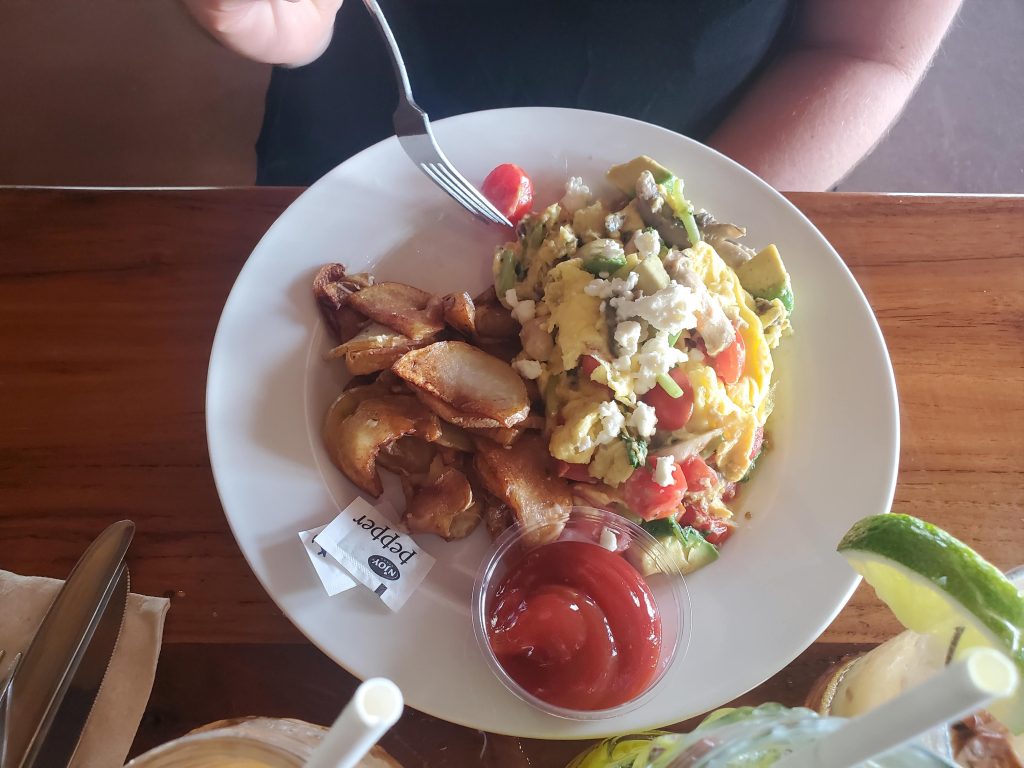
A number of establishments around Maui serve an alcoholic beverage called “Lime in the Coconut.” Maybe that’s a common drink elsewhere, I have no idea. What I do know is that the Hana Maui Ranch puts all others I’ve tried in Maui to shame (particularly the Andaz Maui, it was dreadful).
Still, the best beverage on any Maui menu is going to be the POG juice.
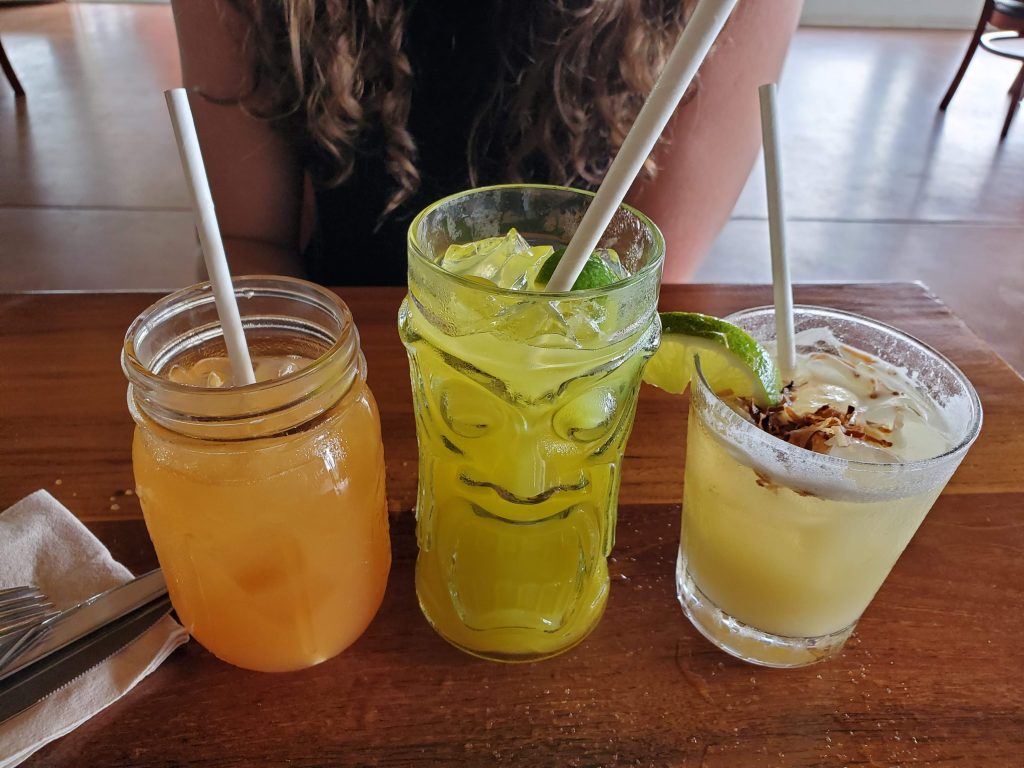
There are loads of places to eat in Hana, especially food trucks. While you shouldn’t expect Michelin stars in this remote farm town, they’re fantastic at the things they create. A stand just a few minutes from the resort (Hana Farms Roadside Stand) makes incredible banana bread of various flavors.
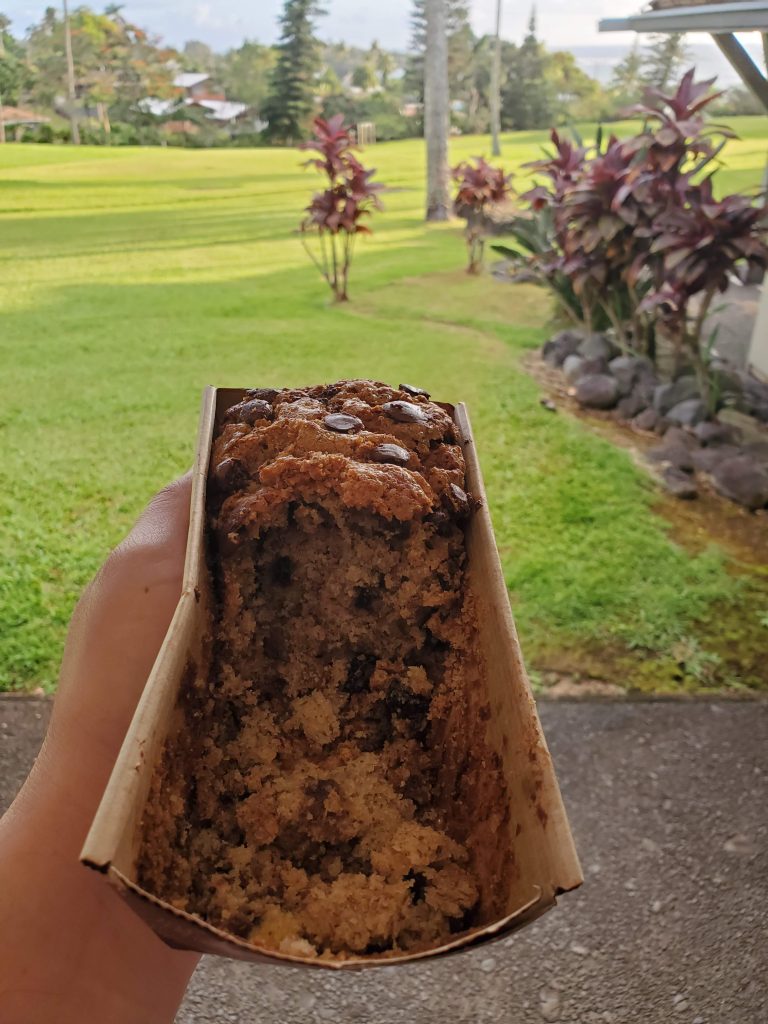
You can also find inexpensive pizza there. A brisket-topped pizza is a relationship I didn’t know I was yearning for.

We tried a food truck just past Hana called Tony’s Place. Maui uses taro, a native vegetable, liberally in its food. You can see by the color of these hamburger buns that they are taro-infused. Anecdotally, I was not a huge fan of this food truck. Mediocre food, flies everywhere, and slow service.
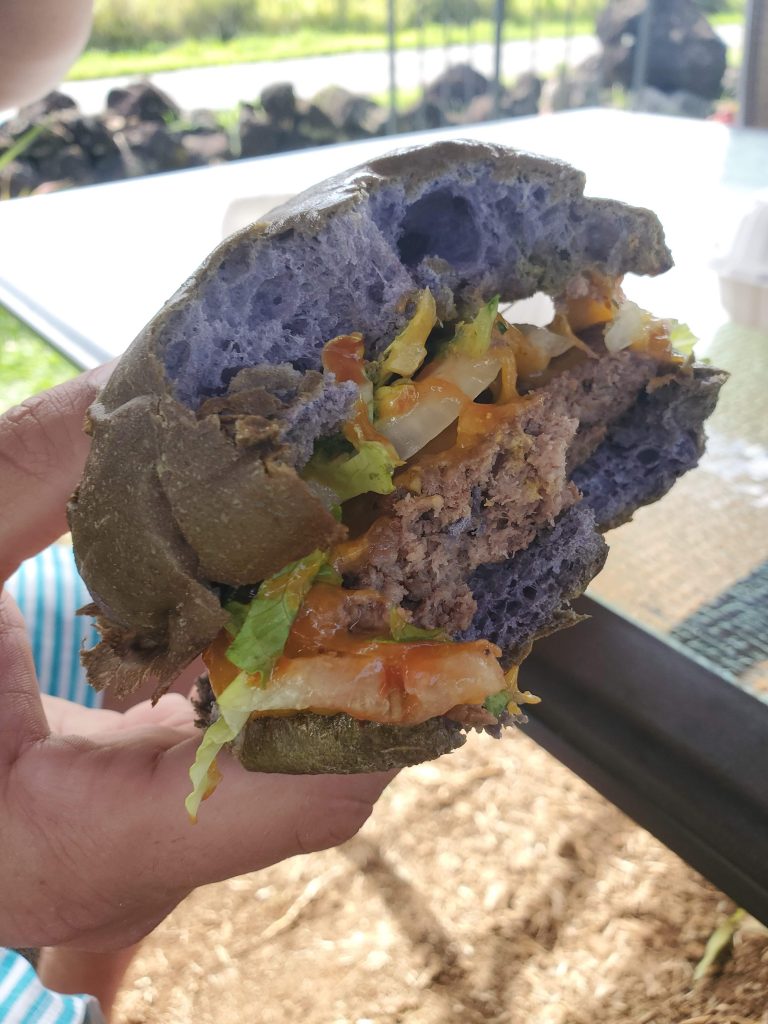
How to earn Hyatt points
There are a load of ways to earn Hyatt points quickly and easily. And ironically, the best way doesn’t involve a Hyatt credit card.
You can transfer Chase Ultimate Rewards points to Hyatt at a 1:1 ratio. That means you can convert the following bonuses to Hyatt instantly:
- Chase Sapphire Preferred® Card – 60,000 Chase Ultimate Rewards points after you spend $4,000 on purchases in the first three months after opening your account (review of the Chase Sapphire Preferred)
- Ink Business Preferred® Credit Card – 100,000 Chase Ultimate Rewards points after you spend $15,000 on purchases in the first three months after opening your account (review of the Ink Business Preferred)
- Chase Sapphire Reserve® – 50,000 bonus points after you spend $4,000 on purchases in the first three months from account opening. (review of the Chase Sapphire Reserve)
And if you’ve got one of the above cards, you can convert the bonuses of cards like the Ink Business Cash® Credit Card and Chase Freedom Flex℠ to Hyatt, as well.
Of course, if you prefer to earn Hyatt points directly, the World of Hyatt Credit Card offers up to 60,000 Hyatt points after meeting tiered spending requirements:
- 30,000 bonus points after spending $3,000 on purchases within the first three months of account opening
- Up to 30,000 more bonus points by earning 2 bonus points total per dollar spent on purchases that normally earn 1 bonus point, on up to $15,000 in the first six months of account opening
Bottom line
The Hana-Maui Resort is a major win for miles and points collectors. Maui is an extremely popular destination, and the Road to Hana is perhaps the most popular island activity!
We’re all excited to see how Hyatt will improve the tattered resort — but honestly, it’s 100% worth a visit as-is. If you’re driving the Road to Hana, you’ve GOT to stay overnight. I don’t see myself ever returning to Maui without staying here at least a few nights. And while the hotel is an expensive Category 7, Hyatt points are very easy to accrue. One travel credit card welcome bonus could net you nearly three free nights — an $1,800+ value!
Let me know if you’ve ever stayed at the Hana-Maui Resort (or Travaasa Hana)! And subscribe to our newsletter for more reviews and travel tricks like this delivered to your inbox once per day.
Editorial Note: We're the Million Mile Secrets team. And we're proud of our content, opinions and analysis, and of our reader's comments. These haven’t been reviewed, approved or endorsed by any of the airlines, hotels, or credit card issuers which we often write about. And that’s just how we like it! :)






Join the Discussion!